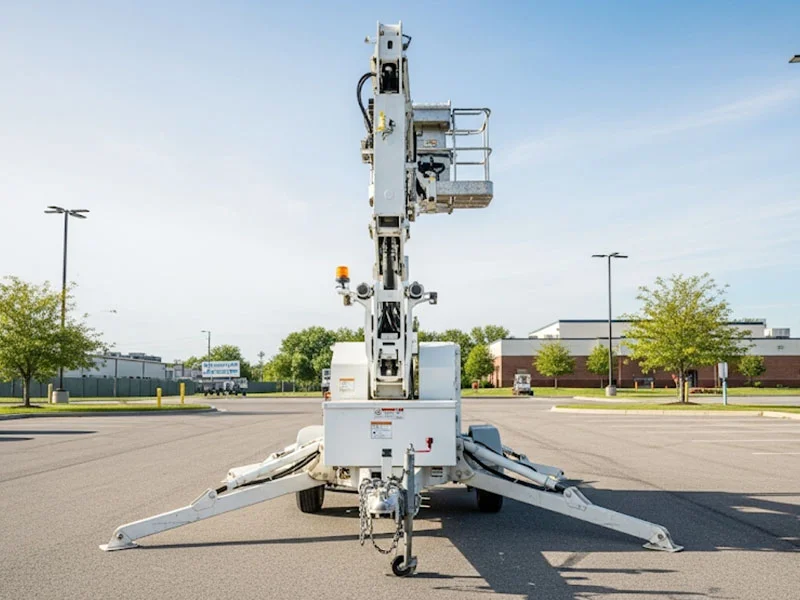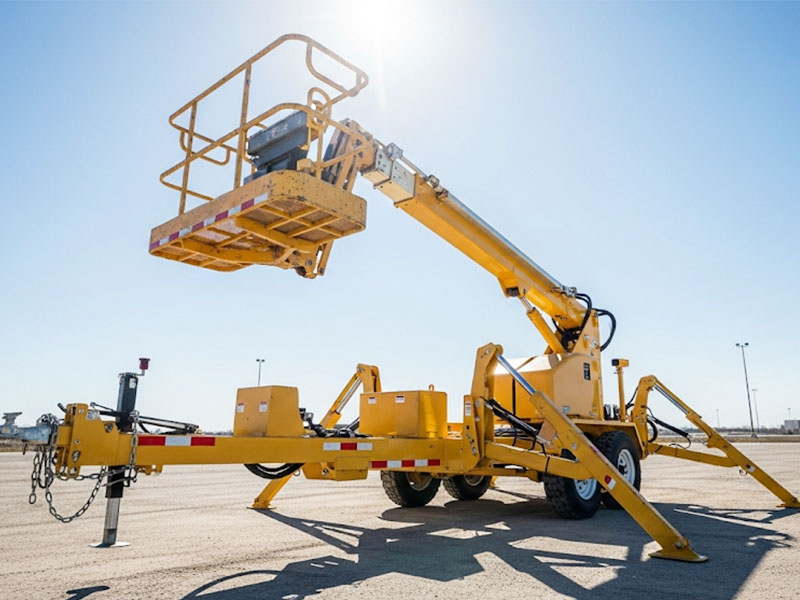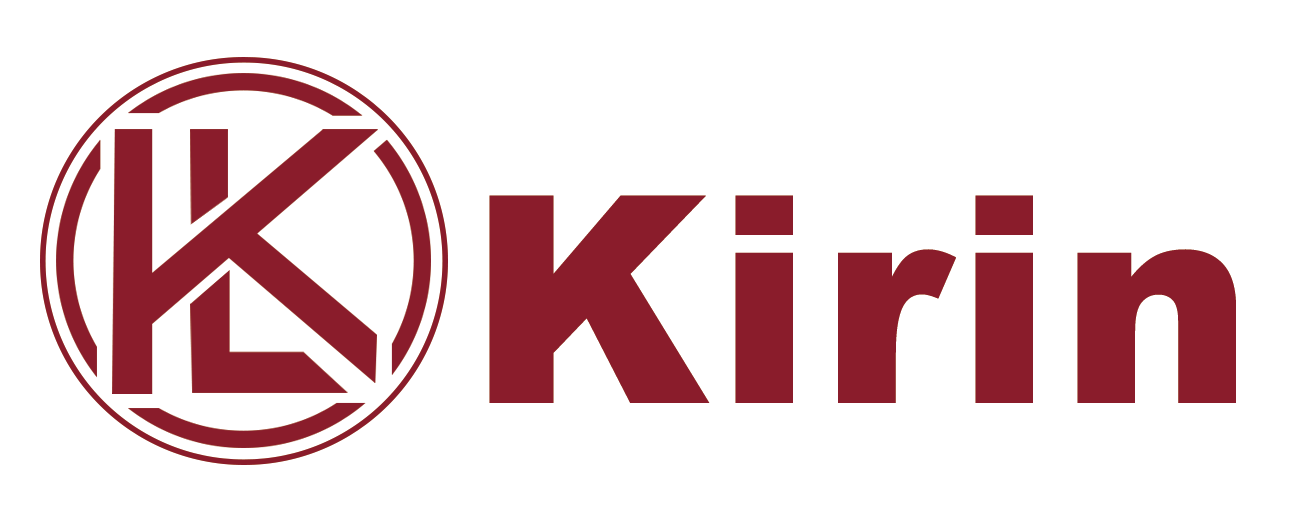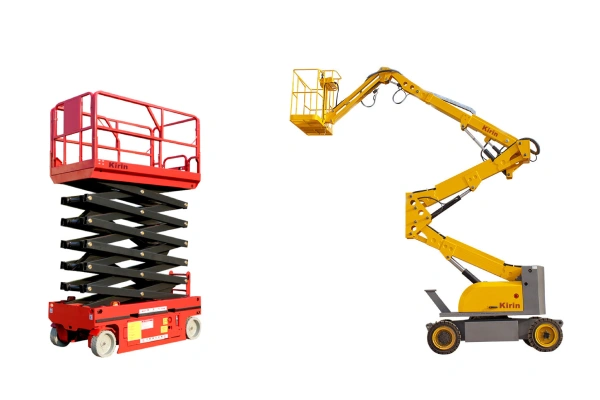
Working at height often presents unique challenges, requiring specialized equipment to ensure safety and efficiency. While many options exist, the trailer boom lift stands out as a versatile and often ideal solution for a variety of tasks. But what exactly is a trailer boom lift, and when is it the best tool for the job? In this post, we’ll explore its features, common applications, advantages, and important safety considerations to help you determine if a trailer boom lift is right for your next project.
What is a Trailer Boom Lift?
A trailer boom lift is a type of aerial work platform characterized by its articulating or telescopic boom, which is mounted on a towable trailer chassis. Unlike self-propelled boom lifts, a boom lift trailer is designed to be easily hitched to a truck or other suitable vehicle and transported from one location to another. Once on site, outriggers are deployed to stabilize the unit, allowing the operator to safely extend the boom and access elevated work areas. This unique design makes the trailer mounted boom lift a highly portable and adaptable piece of equipment.
Key Scenarios & Applications: When to Use a Trailer Boom Lift
The portability and reach of a trailer boom lift make it incredibly useful in a wide array of situations. Here are some key scenarios where a boom lift trailer truly shines:
- Tree Trimming and Arboriculture: For homeowners and professional arborists alike, a trailer boom lift provides safe and precise access to high branches, making tree trimming, pruning, and removal much more efficient and less risky than ladders.

- Building Maintenance and Repair: From cleaning gutters and inspecting roofs to painting high exteriors and performing minor facade repairs, a boom lift trailer offers a stable platform for a variety of building maintenance tasks on residential and commercial properties.
- Lighting and Sign Installation/Maintenance: Whether it’s streetlights, parking lot lights, or large commercial signs, a trailer boom lift allows workers to reach and service these elevated fixtures safely and effectively.
- Utility Work: For tasks involving power lines, telecommunication cables, or other overhead utilities, a trailer with boom lift can provide essential access for installation, repair, and inspection crews.
- Event Setup and Production: When setting up stages, lighting rigs, banners, or decorations for outdoor events, concerts, or festivals, a trailerable boom lift offers the necessary reach and flexibility.
- Farm and Agricultural Use: Farmers often find a boom lift trailer invaluable for maintaining barns, silos, and other high structures, as well as for tasks like fruit picking or inspecting irrigation systems.
- Residential Projects: For homeowners tackling ambitious DIY projects like painting a multi-story house, cleaning hard-to-reach windows, or installing exterior holiday lights, a rented boom lift trailer can be a game-changer.
What Advantages Do Trailer Boom Lifts Have?
Beyond their versatility, trailer boom lifts offer several compelling advantages:
- Portability: This is arguably the biggest benefit. The ability to tow the trailer boom lift with a standard pickup truck or SUV makes it ideal for jobs across multiple locations or in areas where larger, self-propelled machines are difficult to transport.
- Cost-Effectiveness: Compared to purchasing or even renting larger self-propelled boom lifts, a trailer boom lift can often be a more economical choice, especially for intermittent use. You can often find a trailer boom lift for sale at a more accessible price point than other types of lifts.
- Maneuverability: Once on-site and unhitched, many trailer boom lifts are designed with relatively compact dimensions, allowing them to be positioned in tighter spaces than some of their larger counterparts.
- Ease of Operation: While training is always essential, the controls for a boom lift trailer are generally intuitive, allowing operators to quickly become proficient.
- Accessibility: Their ability to be towed directly to the work site means less disruption and setup time compared to lifts that require specialized transport.

Important Considerations & Safety Tips
While highly beneficial, using a trailer boom lift requires adherence to important safety guidelines:
- Operator Training: Only trained and certified individuals should operate a towable boom lift. Familiarity with the specific model and its controls is crucial.
- Site Assessment: Always assess the work area for level ground, potential obstacles, and overhead hazards (like power lines) before deploying the lift.
- Outrigger Deployment: Ensure all outriggers are properly extended and firmly set on stable ground to prevent tipping. Use outrigger pads on soft surfaces.
- Weight Limits: Never exceed the manufacturer’s specified weight capacity for the platform. This includes the operator, tools, and materials.
- Weather Conditions: Avoid operating the lift in strong winds, heavy rain, lightning, or other adverse weather conditions.
- Pre-Operation Inspection: Before each use, conduct a thorough inspection of the boom lift trailer for any damage, leaks, or malfunctions. Check fluid levels, tire pressure, and all safety features.
- Personal Protective Equipment (PPE): Operators and anyone working in the vicinity should wear appropriate PPE, including hard hats, safety glasses, and fall protection harnesses.
Conclusion
The trailer boom lift is a remarkably versatile and practical piece of equipment, perfectly suited for a wide range of elevated tasks where portability and cost-effectiveness are key. From professional applications like tree care and building maintenance to various home improvement projects, the advantages of a trailer mounted boom lift are clear. By understanding its capabilities and adhering to strict safety protocols, you can leverage the power of a boom lift trailer to complete your elevated work safely and efficiently. If you’re looking for a flexible solution for working at height, consider the many benefits a trailer boom lift can offer.
FAQs
Q: Is a special license required to tow a trailer boom lift?
A: In most regions, a standard driver’s license sufficient for towing a trailer of its size and weight is all that’s needed. However, always check local regulations.
Q: How high can a typical trailer boom lift reach?
A: Trailer boom lifts come in various sizes, with working heights generally ranging from 30 feet to over 70 feet.
Q: Can I rent a trailer boom lift?
A: Yes, trailer boom lifts are widely available for rent from equipment rental companies, making them accessible for both short-term and long-term projects.
Q: What’s the difference between a trailer boom lift and a self-propelled boom lift?
A: The main difference is mobility. A boom lift trailer is towed to the site and then stationary during operation, while a self-propelled boom lift can drive itself around the job site. The boom lift trailer offers greater transport flexibility.


